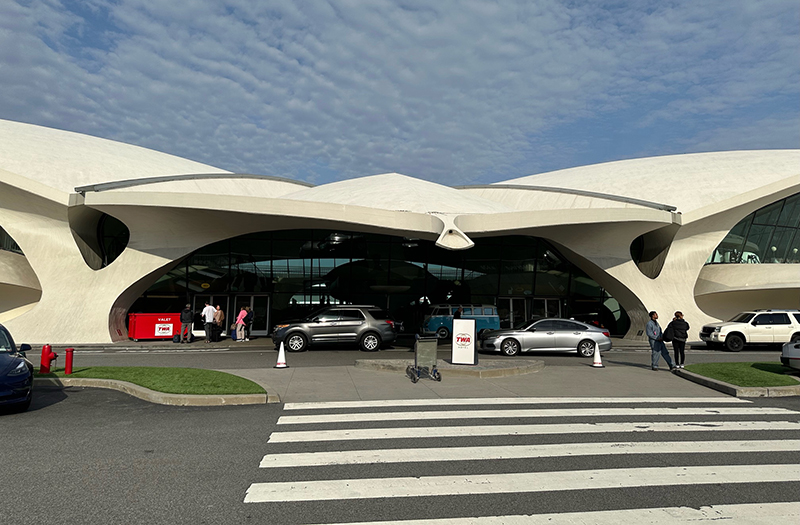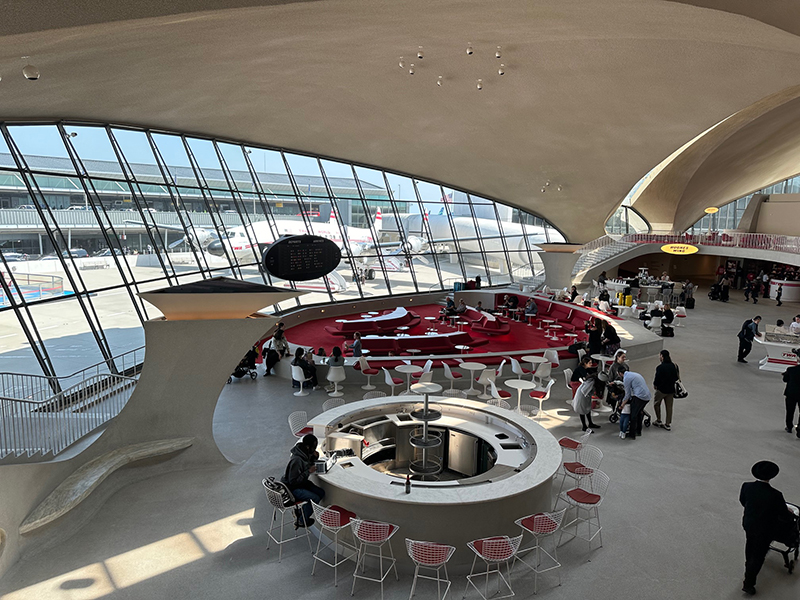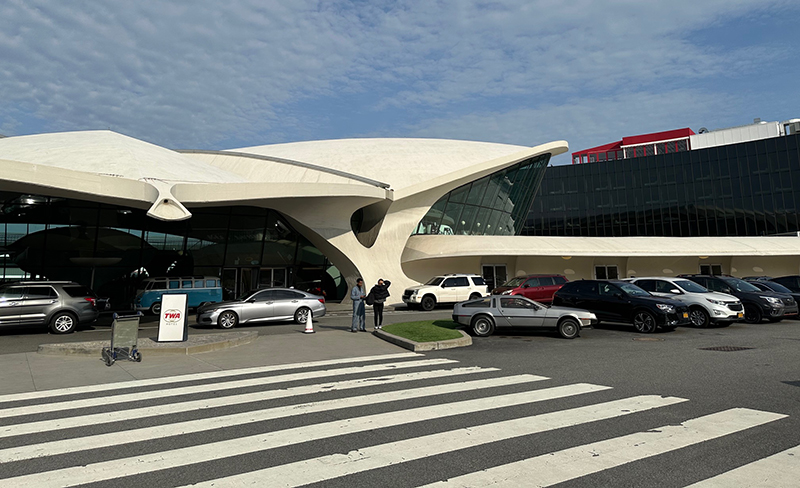TWA Flight Center’s design, history and significance - by William Gati

I lead a wonderful walking tour of this crown jewel of modern architecture.
The TWA Flight Center, designed by Eero Saarinen, is an exemplary piece of modernist architecture, reflecting the optimism and technological ambition of the post-war era. Let’s delve deeper into the building’s design, history, and significance:
 Architectural Design
Architectural Design
Eero Saarinen aimed to capture the spirit of flight in the architecture of the TWA Flight Center. The building is characterized by its bold, sweeping curves and fluid forms that suggest movement and flight. Its bird-like shape, with a prominent central section flanked by wings, creates a dynamic and dramatic silhouette against the skyline.
The terminal’s interior is equally striking. The cavernous, cathedral-like lobby is defined by its vast, shell-like concrete roof and expansive windows that allow natural light to saturate the space. The organic shapes and red and white color scheme were designed to enhance the experience of both travelers and visitors, evoking a sense of adventure and futurism.
 Historical Context and Chronology
Historical Context and Chronology
• 1956: TWA commissions Eero Saarinen to design a new terminal at Idlewild Airport (now JFK Airport) to represent the airline’s brand and the burgeoning age of air travel.
• 1962: The building opens to the public, a year after Saarinen’s death, and quickly becomes an icon of modern architecture.
• 2001: TWA is integrated into American Airlines, and the terminal closes. Its future becomes uncertain amid redevelopment plans for JFK Airport.
• 2016: A major project begins to convert the terminal into a hotel, focusing on preserving its architectural integrity.
• 2019: The TWA Hotel officially opens, featuring restored interiors that maintain many of Saarinen’s original design elements.
Preservation and Transformation
The transformation of the TWA Flight Center into the TWA Hotel is a significant achievement in architectural preservation. The developers and architects involved in the project took great care to restore original elements such as the ceramic penny tiles, the custom-designed Solari departure boards, and the red upholstered seating. Modern interventions, such as the hotel rooms and conference facilities, were designed to complement the style and era of the terminal, ensuring that the essence of the 1960s was kept alive.

Cultural and Architectural Significance
The terminal not only served as a gateway for millions of travelers but also symbolized the glamour and excitement of air travel during the golden age of jet airliners. As a designated New York City Landmark and a listed structure on the National Register of Historic Places, the building is recognized both for its architectural innovation and its cultural significance.
As a structure, the TWA Flight Center stands out as a testament to the creativity and forward-thinking of its era. It reflects the technological optimism of the 1960s, a time when air travel was becoming accessible to the masses and the world felt increasingly interconnected. The building’s ongoing use as a hotel and event space ensures that it remains a vibrant and functional part of New York’s architectural heritage.
William Gati is principal of Architecture Studios, Kew Gardens, N.Y.
Check out NYREJ's Developing Westchester Spotlight!
NYREJ’s Developing Westchester Spotlight is Out Now!
Explore our Developing Westchester Spotlight, featuring exclusive Q&As with leading commercial real estate professionals. Gain insight into the trends, challenges, and opportunities shaping New England’s commercial real estate landscape.


Properly serving a lien law Section 59 Demand - by Bret McCabe

The strategy of co-op busting in commercial real estate - by Robert Khodadadian

How much power does the NYC mayor really have over real estate policy? - by Ron Cohen







.png)


.jpg)
.gif)